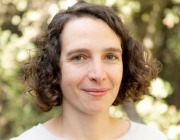ATLOMY's Research at a glance
The Greek term anatomē (literally: ‘cutting up’) referred to both the field of knowledge concerning the structure of the body and the practical method of studying it through dissection and vivisection. Greco-Roman anatomical ideas and research played a decisive role in the history of medicine and philosophy, from antiquity until well into modern times.
In antiquity, anatomy was a dynamic field in the making and the anatomical picture and terminology differed among authors. We must speak, in fact, of anatomies, in the plural. Different authors depicted the structure of the body and its parts differently. The goal of the ATLOMY Project is to visually and textually chart and analyse the diverse anatomical ideas, terminologies and research methods.
Our team of classicists and historians, experts in modern human and veterinary anatomy and experts in 3D modelling and advanced software interfaces work together to re-enact ancient anatomical empirical research, decipher ancient anatomical ideas and create visual representations of these ideas and methods of research. Our research centers round the ancient anatomists whose ideas had the greatest impact in the history of science, medicine and philosophy: key medical authors of the 5th to 3rd centuries BCE; the philosopher Aristotle (4th century BCE); and the physician Galen of Pergamum).
Main Research Questions
- How did ancient Greeks and Romans investigate, describe, and explain the structure of the body?
- How did anatomical ideas, research and terminology shape one another?
- What were the conventions of anatomical textual descriptions?
Textual Scope:
The project focuses on Greco-Roman authors with pivotal and formative roles in the history of anatomy and the related fields of medicine and biology; and those for whom the evidence is substantial and accessible. The work is divided into three textual strands:
Early medical writers (5th to 3rd centuries BCE) (Orly Lewis): This strand will include the anatomical works in the Hippocratic Corpus and key anatomical descriptions in some of the other treatises of this corpus. In addition, it will include the fragments of the prominent physicians Diocles of Carystus, Praxagoras of Cos, Herophilus of Chalcedon, and Erasistratus of Ceos.
Aristotle (4th ce ntury BCE) (Marco Vespa): This strand will focus on the anatomical part of Aristotle’s major zoological work Researches on Animals (Books I-IV) and will consider parallel passages from other works, (e.g. Parts of Animals)
ntury BCE) (Marco Vespa): This strand will focus on the anatomical part of Aristotle’s major zoological work Researches on Animals (Books I-IV) and will consider parallel passages from other works, (e.g. Parts of Animals)
Galen (2nd c. CE): This strand will focus on Galen’s monumental fifteen-book treatise On Anatomical Procedures.
We are developing high-end interactive digital atlas of ancient anatomies, which will present the different anatomies in 3D models and offer advanced viewing and study tools (beta version: www.atlomy.com). The atlas includes lexical tools, serving as a digital lexicon of the anatomical terms used by the ancient anatomists. Another key output we are working on is a media gallery of select re-enactments of ancient dissections.
The research plan and methods have been approved by the strict ERC Ethical screening process.
If you have any questions on this, please contact me at atlomyproject@savion.huji.ac.il.
ATLOMY's Team:
- Principal Investigator (Dr. Orly Lewis)
- Administrative Manager (Mrs. Yael Baron)
- Postdoctoral Fellow: working on Galen (tba)
-
Postdoctoral Fellow: working on Aristotle (Dr. Marco Vespa)

-
Experts in Veterinary Medicine (Koret Veterinary School, HUJI):
- Prof. Joshua Milgram
- Mr. Esteban Marroquín Arroyave
- Product Manager (Mr. Premshay Hermon)
- 2D Illustrator (Mr. Yotam Giladi)
-
3D Illustrator:
- Mr. Yotam Giladi
- Mr. Lenny Caino
- Software Developers (ITG Software Engineering)
-
Students
- Mr. Dimitry Ezrohi (Classics, M.A. student)
- Mr. Nir Propper (Classics, B.A. student)
- Ms. Zeina Shihabi (Middle Eastern and Arabic Studies, M.A. student)
- Mr. Ohad Katz (Classics, B.A. student)
- Ms. Shada Hadid (Medicine, Technion)
- Data Science (Mr. Roey Zowerbach – Classics, HUJI)
External Collaborators:
- Experts in Human Medicine (Medical Faculty, HUJI – Prof. Lili Anglister; Prof. Aharon Lev-Tov)
- Experts in Greco-Roman Medicine: (Prof. Pavel Gregoric; Dr. David Leith; Dr. Julius Rocca; Prof. Luis Alejandro Salas; Dr. Peter N. Singer)
- Logo design and branding: Christoph Geiger
ATLOMY's Atlas Software
Our beta version is online and we are adding new content and features on a weekly basis.
You can check it out at www.atlomy.com
We are currently gathering feedback from users and planning Version 2.0 - development on the new version will begin in summer 2022 and will feature new advanced tools connecting text and model and more.
If you have any feedback to share with us, or any questions, we would love to hear from you. Please write to us at atlomy@mail.huji.ac.il.
Online talks and media:
A brief introduction on digital research on ancient medicine and ATLOMY's atlas: https://www.youtube.com/watch?v=TQFvMctDoww
A talk by Orly on 3D modelling in the Humanities. With an introduction and presentation of the work of ATLOMY. Part of the Sunoikisis Digital Classics: Digital Approaches to Cultural Heritage, Spring 2022.
For the talk on youtube: https://youtu.be/UHxHFd9VgpA
Slides: introduction and about ATLOMY
About the session: https://github.com/SunoikisisDC/SunoikisisDC-2021-2022/wiki/5-3D-modelling



